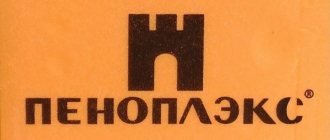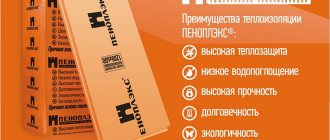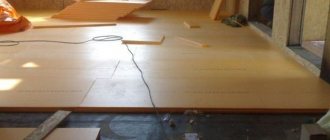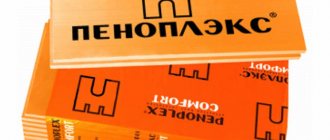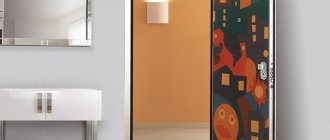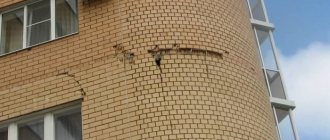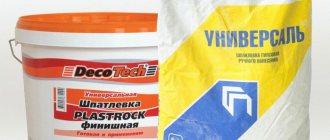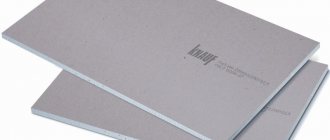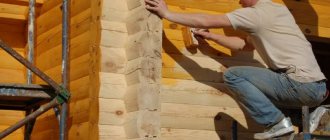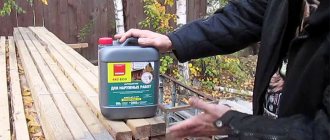Purpose of the material
Penoplex is made from polystyrene granules, subjecting them to high temperature and strong pressure. Under the influence of a foaming catalyst, the lumps turn into a finely porous foamy mass. It is then formed into slabs and sent to the end user.
Using expanded polystyrene, a person does not harm the environment and his health, since the raw materials are environmentally friendly. The material is also not afraid of adverse weather, does not decompose, does not rot.
Penoplex does not interact with alkalis, paints, acids, ammonia, alcohol, and lime. May come into contact with gasoline, oil paints, formaldehyde.
Distinctive soundproofing characteristics of expanded polystyrene:
- high moisture resistance;
- excellent compressive elasticity - up to 35 kg/m³;
- low level of thermal conductivity - 0.027-0.031 W/m;
- high-quality work in a wide range of temperatures - from -50°C to +75°C;
- average degree of fire resistance - G3, G4;
- almost completely waterproof - after 28 days, moisture absorption by volume is only 0.5%.
The main issues solved with the help of Penoplex:
- Insulation of balconies, loggias, roofs.
- Thermal insulation of basements, garages, outbuildings.
- Protection of foundations of industrial and residential premises.
- Soundproofing of hotels, cottages, saunas, baths, cottages, factories.
- Heat and sound insulation of interfloor partitions, floors, walls.
Insulation and soundproofing of premises
Often, residents use Penoplex sound insulation to insulate their home and place it under the laminate. To do this, a few slabs 2-3 cm thick are enough; on the first floors it is better to lay 5 cm blocks. Expanded polystyrene mats are often used in conjunction with other soundproofing materials to improve insulation efficiency. In this way, you can suppress noise levels reaching about 60 decibels.
Inexperienced people often use foam plastic as insulation for walls and floors. This expanded polystyrene is not at all suitable for solving such problems, in particular in wooden houses. They use mineral wool sound insulation made from basalt fibers, but it is very expensive - 1600-4000 rubles. for 1 sq. m.
Sound insulation with extruded polystyrene foam is the best option in terms of price and quality. Prices for one sheet measuring 1185x585x50 mm and area of 0.7 sq. m starts from 185 rub. The sheets are quite durable and difficult to break. They can withstand heavy loads, and in terms of thermal conductivity they can compete with mineral wool.
Characteristics of foam plastic
Polystyrene is one of the few that is not capable of releasing substances harmful to the human body. Expanded polystyrene is a type of plastic that, when burned, emits vapors identical to wood. Thanks to manufacturing technology, this material has the property of quickly fading. Water is not capable of destroying it, much less causing the proliferation of microorganisms. Therefore, polystyrene may come into contact with food. Expanded polystyrene can come into excellent contact with asphalt mixtures, fertilizers, paints, and soap.
It has been proven that the external environment does not destroy the composition of polystyrene foam. But water wears away stones. Therefore, excessively long exposure to ultraviolet radiation can significantly reduce its resistance to moisture and air currents. It would be best to cover the foam structure with a special material.
Thanks to the perfection of technology, a fire retardant was introduced into the composition of the foam. Due to this, he gained the ability to resist fire for 4 seconds. A sheet of polystyrene foam 3 cm thick can protect the room to a fairly good extent. If you increase the foam layer, you can achieve a very high level of noise absorption. The insulation is made from several sheets of expanded polystyrene, sealing the outer layer with a rigid facing material. This design can absorb almost 100% of noise.
Wall soundproofing diagram.
But it is worth remembering that polystyrene foam is afraid of contact with chemical compounds (ethyl alcohol, acetone, white spirit, gasoline, kerosene). This is explained, first of all, by the structural features of the foam, which contains cells filled with air.
When using penoplex and expanded polystyrene in construction, a number of positive aspects can be highlighted. These include:
ease and ease of processing; use without additional precautions; non-susceptibility to deformation.
Soundproofing technology
For greater heat retention in an office or living space, a layered floor covering is recommended. It will also completely absorb noise and unwanted sounds. Laying Penoplex as soundproofing for floors is often combined with materials such as:
- ceiling in the form of a concrete slab;
- Penoplex layer;
- waterproofing pad;
- reinforcing mesh;
- concrete screed;
- decorative coating in the form of tile ceramics, laminate, carpet, linoleum.
We recommend: Features of soundproofing with foam plastic
Expanded polystyrene Penoplex here acts as a substrate that dampens all kinds of noise and protects the floors from the cold. Sometimes, when constructing this type of floor, frames made of wooden blocks are used. The bars are a kind of stiffening ribs and at the same time cells for inserting polystyrene foam sound insulation.
Cleaning the ceiling surface
You can use spatulas, hard brushes, washing with water and other methods that are most convenient in a particular situation. The end result should be a consistently clean surface.
- All surface defects such as cracks, cracks, potholes and chips are repaired on the ceiling. Particular attention should be paid to the joints between floor slabs - defects are most often found there.
How to eliminate defects in the ceiling surface?
Any ceiling finishing involves preliminary preparation of its surface. How to seal joints between floor slabs
– read in a special publication on our portal.
- In order to prevent the appearance and spread of mold and at the same time increase the adhesive qualities of the ceiling surface, it is treated, preferably in two layers, with a special primer with antiseptic properties.
Soundproofing process
The ideal soundproofing properties of Penoplex allow you to forget about the cold, noise and moisture in any room for many years - an office, an apartment, a private house. The sheets fit perfectly together, resulting in a durable structure. This further increases the resistance of the material to heavy loads.
When arranging rooms with sound insulation Penoplex, extruded polystyrene foam with a product thickness of 2-3 cm is mainly used. Despite their modest parameters, they have high protective qualities from noise and cold, while other materials to obtain the same effect have to be laid in layers up to 15 thick cm.
Stan
Penoplex protects walls from moisture, cold and extraneous sounds better than mineral wool or other materials. This is due to the small thickness of the mats, which are easy to install into the thickness of the wall. By comparison, with similar wall insulation with a mineral wool board, the insulation layer would be 10-15 cm. This will significantly reduce the usable area of the room.
Extruded polystyrene foam Penoplex, or EPS, is suitable for soundproofing external and internal wall spaces. It is shock-resistant, not afraid of moisture and direct sunlight.
Paula
Finishing the floor with Penoplex will protect residents from noisy neighbors below and help conserve heat in the apartment. The material does not create excess load on the floor, even in tandem with a concrete screed, and does not in any way affect the overall structure of the floor. The method of insulating a home with polystyrene foam directly depends on the floor covering.
If the room has an old wooden floor, then it should be dismantled, the joists should be strengthened, and stiffeners should be installed. After this, the cracks and gaps are treated with polyurethane foam and reinforced with construction tape. However, Penoplex is often combined into one layer with a concrete screed. Installation of such floors looks something like this:
- The old coating and glue residues are removed from the surface.
- Remove dust/dirt, fill gaps and cracks with construction foam or seal with putty.
- The concrete floor surface is primed.
- Markings are applied to the slabs, taking into account protruding pipes and communications, and then cut.
- A sand-cement mixture or a 2 cm thick layer of sand is poured onto the concrete floor. Not all slabs are sprinkled at once, but 2-3 at a time.
- Penoplex sound insulation is laid on the embankment, lightly pressing it against the bottom layer. Fill the entire area of the room.
- Overlapping reinforcement mesh is laid on top of the polystyrene foam.
- Fill everything with concrete screed.
We recommend: Types of acoustic foam rubber and features of its installation in the interior
Ceiling
Is polystyrene a decent sound insulator for ceilings? Yes, no doubt. With the help of Penoplex, it is possible to permanently get rid of mold and mildew, as well as reduce the noise level from neighbors above, and maintain heat in the apartment. Ceiling preparation begins with removing the old coating, sealing cracks and voids, and ends with priming the surface.
Further stages of work:
- prepare the adhesive solution;
- cut polystyrene foam boards into segments according to the shape and area of the ceiling;
- Lubricate each piece of mat with glue, but not completely - first walk around the perimeter, then drop a few dots over the entire area;
- firmly press the piece of material to the ceiling, as if pressing it into the base, hold for several minutes;
- fill the entire ceiling.
Complete the insulation of the surface with decorative elements: plasterboard, plaster, beautiful panels.
Penoplex - scope
The scope of application, thanks to its valuable positive characteristics, is quite wide. It is suitable for indoor and outdoor sound insulation and insulation:
- dacha;
- apartments;
- cottages;
- factories;
- hotels;
- churches.
At the initial stage of construction, this material is used to insulate the foundation. Thanks to this, there is no need to deepen the structure much, since the soil freezes less. The foundation receives additional moisture protection, which extends its service life.
In any region, polyester foam is used to insulate balconies, roofs, walls, attics, and walls. Polyesterol can be used even in baths and saunas, due to its low water and vapor absorption. In basements, you can lay the slabs on a gravel surface, just level it.
It is worth noting: the slabs are sold in different thicknesses from 2 centimeters to 10, and you can choose based on your needs and capabilities.
How to avoid mistakes
To achieve maximum effect, you must adhere to the following rules:
- To insulate the walls of a room, sound insulation from polystyrene foam is laid in rows, from bottom to top.
- Particular attention is paid to those areas that transmit sounds and cold the most.
- For better adhesion of Penoplex and the base, go over the mats with a needle roller or sandpaper.
- When attaching mats with dowels, calculate the length of the nails: add the actual difference in the fastening surface to the thickness of the glue and sheet, then add a couple of centimeters to the depth of the hole left for the dowel.
- The dowels are fastened in a checkerboard pattern touching each other.
- Penoplex products are reinforced with reinforced mesh, placing it on an adhesive layer. The glue is leveled with a spatula, completely immersing the mesh in it.
- The cracks/gaps are filled with foam without the slightest omission.
Before work, select polystyrene foam mats that exactly match the parameters of the specific room.
Brick houses are much better in this regard
Impact noise is poorly transmitted from lighter to heavier structures, and the walls themselves dampen the airborne propagation of sounds well. But the “problem of upper neighbors” still does not disappear.
- In houses built using the now widely used monolithic frame construction technology, noise insulation problems are very acute. True, it is much more difficult to “sway” very massive floors, but vibrations from them are transmitted to light wall partitions with virtually no losses.
Reviews of sound insulation made of polystyrene foam
Buyers who have tried Penoplex in action note the light weight but large volume of the panels. The mats take up a lot of space in the room, but are easy to cut and, if desired, quickly transported to the next room. If soundproofing is installed correctly, your home can be finished in one day. The work does not require special tools or special skills; all steps can be easily completed with your own hands.
According to reviews of Penoplex sound insulation, the material does an excellent job of thermal insulation of floors. It is a good layer between other layers, together with them forming an impeccable coating that completely retains heat in the house. Carpets, runners, and other coverings are no longer needed, since the floors are warm and your feet do not freeze when in contact with them.
Scheme of possible noise propagation in a multi-storey building
- Impact noise is the propagation of sounds of a slightly different kind. Its source is mechanical - shock or vibration effects on the surface. In this case, vibrations are transmitted to the ceilings, which themselves become both a carrier and a source of noise, directly transmitting sounds into the premises. Moreover, these vibrations are perfectly transmitted from the slabs to all adjacent structures, and such noise is the most difficult to deal with.
This could be the sounds of footsteps or children jumping, falling dishes, working with construction tools, rearranging furniture, or folding out a sofa. By the way, low-frequency vibrations from, for example, a loudly turned on home theater subwoofer, an unsuccessfully installed washing machine, etc., propagate in the same way.
- There are also structural noises that are caused by equipment operating in the building - this can be ventilation or air conditioning units, boilers, pipelines, etc. Such vibrations can have both air and shock (vibration) propagation.
The transmission of sounds in different types of houses also has its own characteristics.
- Panel reinforced concrete houses, which at one time were massively erected everywhere to quickly solve the problem of the housing crisis in the country, are the worst in terms of noise insulation.
Insulation methods
You can insulate the ceiling with polystyrene foam yourself from the outside and from the inside. The cold air side option provides greater efficiency and is scientifically correct. When insulating a private house, it is best to insulate the ceiling of the upper floor from the attic side.
This method is difficult if insulation is carried out in an apartment building. In this case, insulation from the inside is practically the only possible option. Insulation in the apartment is carried out not only to protect from the cold, but also from noisy neighbors.
As mentioned earlier, the combination of water and polystyrene foam is undesirable, therefore, when laying, two additional layers are provided: on the cold air side - waterproofing, and from the inside of the room - vapor barrier.
The procedure for carrying out work when insulating from the attic:
- clearing the surface of debris, dust and dirt;
- leveling if necessary;
- vapor barrier;
- laying logs (if they are needed);
- laying foam plastic (it is necessary to provide a small gap between the insulation boards or between the insulation and the joists; the foam expands slightly after laying);
- waterproofing;
- pouring the screed (for the method without logs) with laying wire reinforcement with a diameter of 3-4 mm;
- clean floor.
The last point is an optional step. You can leave a cement screed as a floor covering in the attic.
Thermal insulation of the ceiling in a private house from the inside is carried out in the following order:
- ceiling cleaning;
- installation of a frame (wooden or aluminum profile, this step is not necessary);
- securing foam sheets;
- vapor barrier;
- ceiling trim.
conclusions
Extruded polystyrene foam is considered a highly effective sound insulation material. Therefore, you can safely use it instead of expensive mineral slabs and other similar materials.
For information
Extruded polystyrene foam has a durable, integral microstructure that looks like closed cells filled with gas molecules. This is a chemical substance with strong intermolecular bonds, which are tens of times stronger than in polystyrene foam. Individual cells are impenetrable due to the fact that, unlike polystyrene foam, they do not have micropores, which prevents the penetration of water or gas from an adjacent cell
The design of an insulated floor with a “floating” screed on a layer of penoplex
1 – walls of the building.
2 – floor slab.
3 – layer made of foam boards. It will simultaneously play the role of both a thermal insulator, making the floor warmer, and a damping barrier against the spread of impact noise.
4 – waterproofing layer.
5 – reinforced screed. It is in no way connected with the ceiling, since it rests on a foam polystyrene substrate, or with the covering of the walls (item 6) - it is separated from them by special damper inserts (item 7).
8 – finishing floor covering.
This means that the best solution would be to try to convince the upper neighbors to complete the floor according to a similar scheme. How realistic this is is a completely different question. But in any case, it won’t hurt to make such floors at home, so as not to become a cause of discomfort for those living below.
What is the conclusion from all that has been said?
Soundproofing an apartment in a multi-storey building is an extremely difficult procedure. To achieve the effectiveness of such a system, it is best to contact specialists in this matter - they will help take into account all the features of the building and the sources of constant noise.
But if some “specialist” suddenly wants to “rip” money from you for supposedly soundproofing the ceiling by installing foam boards on it, feel free to send him away.
The conclusion is clear - extruded polystyrene foam is absolutely not intended for soundproofing an apartment, with the exception of one single option, which is mentioned above - in the design of the screed. All other “improvisations” are a completely pointless waste of effort and money. Not only will this not bring the desired result, but it can also cause serious harm.
Answers to initial questions
It remains to answer the questions that were asked initially and related to the main purpose of penoplex installed only on the ceiling.
Penoplex is a sound insulator: is it true?
It is worth immediately noting that the ability of the designated material to perform the functions of a thermal insulator is not questioned here. The highest reliability of penoplex was noted; it is beyond doubt. Therefore, the designated material is widely used in the construction industry. The following help to use penoplex as insulation:
But our extruded polystyrene foam was not originally intended as a soundproofing material. So special qualities, such as providing sound insulation, although they are inherent to it to some extent, but only with an impeccable installation method.
Can penoplex really protect an apartment from airborne noise?
Research shows that no significant benefit in this sense can be expected from penoplex. Although the designated material is porous and lightweight, it has significant elasticity and rigidity. So the slab of extruded polystyrene foam becomes a kind of membrane. And if you “shake” it with sound vibration, it turns into an additional “speaker”.
Thanks to the results obtained during laboratory research, it became clear that the special structure of the material enhances frequency resonance in a considerable range - from approximately 200 Hz to 500 Hz. These are the average speech range indicators. So in this frequency range they can o. In other words, airborne noise will be amplified, presenting a significantly increased indicator - approximately from 12 dB to 15 dB.
Can penoplex somehow help in the fight against impact noise?
You can conduct a simple experiment yourself: just tap a section of extruded polystyrene foam with your finger or pencil. It is easy to see that this material can be used in the form of a drum. Its sound, even under light shock loads, is quite resonant. Naturally, penoplex will also not muffle stronger impact sounds. They will be transmitted through massive building structures, and such a coating will only strengthen them.
Impact noises should subside when these waves are transmitted through different parts of the building structure. The greater the massiveness and density of the next material, the lower the amplitude of the shock wave. Plates placed on the ceiling become another transmission link for the propagation of impact noise. In this case, the resonance phenomenon will most likely intensify.
Such noise is reduced by installing special materials with a very high density. For example, Texound sheets are used.
What happens if extruded polystyrene foam is installed on the floor in the apartment of neighbors above
That is, penoplex is mounted on the side of the noise source. In this situation, the picture will change dramatically. A certain damping layer is formed, which takes on the main shock load.
The ratio of layer density will also have a positive effect on the situation. Shock vibrations, when they begin to be transmitted from lightweight polystyrene foam to a dense concrete slab, will noticeably change their strength. The impact noise level will be significantly reduced.
So the indicated properties of extruded polystyrene foam should certainly be taken into account if it is intended for soundproofing a room. A special effect is shown by its installation when a floating insulated screed is constructed. This system does not have a rigid connection either with the walls or with the floor slab.
Apartments in monolithic frame houses require a special approach to sound insulation
Reducing the “noise” of such apartments is a very complex process that requires a comprehensive approach, and soundproofing only the ceiling surface becomes “like pellets to an elephant.”
Now let's see if penoplex can help in these situations.
Is penoplex a soundproofing material?
First of all, it is worth making one remark. The author of the publication in no way questions the highest quality of penoplex as a thermal insulation material that has wide application in construction. The combination of low thermal conductivity, lightness and high mechanical strength allows this material to be used for insulating foundations and plinths, floors and roofing structures, facades and road surfaces.
Installation features
At the installation stage, the future characteristics of the soundproofing layer are laid down. The installation method is a key factor. Sound insulation will be satisfactory if there is an understanding of the processes taking place. This will allow you to most effectively protect your home from extraneous sounds and avoid mistakes.
To do this, it is necessary to consider all installation methods with an assessment of the final result:
- Fixation with glue. Convenient, economical and most effective installation method. If foam plastic is glued to concrete, brick, plaster, then the most complete fit is ensured. Vibrations in this case are damped well. Do not use adhesives
- Installation of foam plastic with fasteners. The method is good for external use. Often used for insulation and soundproofing of walls.
Inserting into the cells of the sheathing. A large number of individual elements creates risks for complete shelter. It is difficult to avoid gaps and cracks. Rigid metal profiles that transmit vibrations well also do not contribute to good sound insulation.
What is this?
Penoplex is extruded polystyrene foam, which is an excellent material for sound insulation.
Its use provides reliable protection from extraneous noise, and the installation process itself looks quite simple for a beginner.
Advantages
The main advantages of soundproofing the ceiling in an apartment made with penoplex include:
- High compressive strength;
- Light weight, which makes installation and transportation easier;
- Minimum level of water absorption;
- Long service life;
- Thermal conductivity;
- The economic benefit when purchasing material allows you to minimize the cost of sound insulation during repair and construction work, without sacrificing quality;
- A special shape of the edges is used, due to which installation is quick and effortless.
Why should you choose it?
Today, many people choose penoplex when reliable soundproofing of the ceiling in apartments is required. This is explained by obvious facts that speak in favor of this material:
- The material helps protect against noise and sounds not only when finishing the ceiling, but also the floor - it allows you to install a heating system;
- No professional skills or special tools are required to install the slabs;
- Over time, the characteristics of penoplex do not lose their relevance;
- In addition to noise protection, penoplex is resistant to bacteria and rotting.
User opinions
“In 2012, I began external thermal insulation of a house made of sand-lime brick with 30 mm EPS slabs in 2 layers. I was attracted by its price (about 100 rubles per extruded sheet) and characteristics. At first I covered only 1 wall with polystyrene foam, but the effect was noticeable in winter: it was much warmer than the rest. The next year he continued, doing everything on his own. After this, we even had to turn off one radiator in a large room and reduce the degree of heating of the coolant. Warmth and gas savings are evident everywhere.”
Sergey, Nizhny Novgorod.
“I decided to insulate the pitched roof of a country house. The employees of the company I contacted recommended extruded slabs. Before agreeing, I read the reviews: some wrote about health hazards, but were somehow vague. To prevent the insulation from overheating in hot weather, we first laid foamed polyethylene with foil, then the slabs themselves, 100 mm thick, sheets of polystyrene foam (5 cm) with a locking mechanism, and the final finishing. It turned out quickly and efficiently.”
Ilya Mikhailov, Moscow.
“We live in a panel house on the ground floor, and when frost sets in, the floor is simply icy. We started the renovation, doing everything gradually. The old screed was completely removed, waterproofing was laid and special polystyrene foam slabs, 5 cm thick, and reinforcing mesh were laid. A concrete screed was poured on top, and laminate was laid after drying. My feet don’t get cold now, the rooms are much warmer.”
Ivan, Yekaterinburg.
“I used extruded polystyrene foam to soundproof the interfloor ceiling of a wooden house. Sheets 5 cm thick were laid between the joists. I am completely satisfied with the result: if before you could clearly hear what the children were doing upstairs, now there is peace on the ground floor even during their loud games.”
Alexander Berestovsky, St. Petersburg.
“I was looking for material for insulating the base, comparing different options, reading reviews. I decided to go with the extruded type of polystyrene foam, although I came across information about its health hazards. But if there were grounds for concern, the material would not be approved for use. The work was carried out according to the manufacturer's instructions, covering the top with 60x60 cm slabs of dark façade porcelain stoneware. 3 years have passed, the extruded insulation is performing its functions, everything is holding together, the surface is not warping.”
Yuri, Voronezh.

